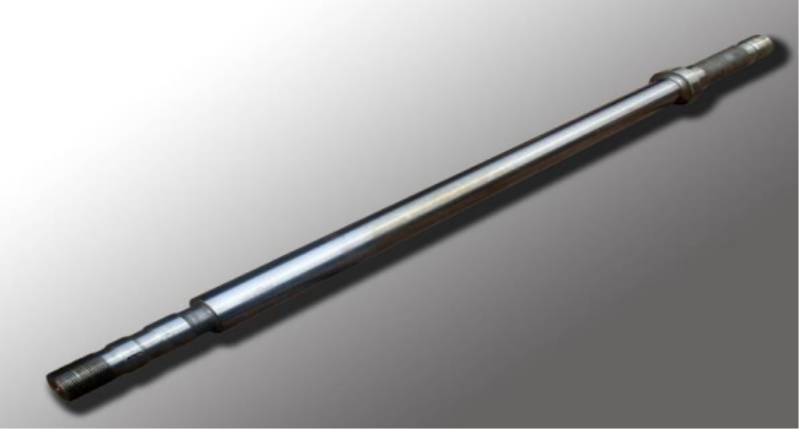The piston rod is mainly used for hydraulic pneumatic, engineering machinery, automotive manufacturing piston rods, plastic machinery guide pillars, packaging machinery, printing machinery roller shafts, textile machinery, conveyor machinery axis, and linear optical axis for linear motion.
The piston rod is a connecting component that supports the piston to do work, and is mostly used in oil cylinders and cylinder motion execution components. It is a moving component with frequent movement and high technical requirements. Taking hydraulic oil cylinder as an example, it consists of several parts: cylinder barrel, piston rod (cylinder rod), piston, and end cover. The quality of its processing directly affects the lifespan and reliability of the entire product. The machining requirements for piston rods are high, with a surface roughness requirement of Ra0.4~0.8 μ m. Strict requirements for coaxiality and wear resistance. The basic feature of the oil cylinder rod is the processing of slender shafts, which is difficult to process and has always troubled the processing personnel.
The piston components include: piston, piston ring, support ring, piston rod, etc. According to different structural forms, pistons can be divided into cylindrical pistons (longer than diameter), disc pistons (shorter than diameter), differential pistons, combination pistons, and plunger pistons.
The material of the hydraulic cylinder piston rod is S45C 4140 42Crmo4 steel, which is subjected to quenching and tempering treatment. After surface turning and grinding, it is chromium plated with a thickness of 0.03-0.05mm. The piston rod is a connecting component that supports the piston to do work, and is mostly used in oil cylinders and cylinder motion execution components. It is a moving component with frequent movement and high technical requirements. Taking hydraulic oil cylinder as an example, it consists of several parts: cylinder barrel, piston rod (cylinder rod), piston, and end cover.
The quality of its processing directly affects the lifespan and reliability of the entire product. The machining requirements for piston rods are high, with a surface roughness requirement of Ra0.4~0.8 μ m. Rolling processing is used for the same piston rod to improve its surface corrosion resistance and delay the generation or expansion of fatigue cracks, thereby improving the fatigue strength of the cylinder rod.
By rolling forming, a cold work hardening layer is formed on the rolling surface, reducing the elastic and plastic deformation of the contact surface of the grinding pair, thereby improving the wear resistance of the cylinder rod surface and avoiding burns caused by grinding. After rolling, the reduction of surface roughness value can improve the fitting properties. At the same time, it reduces the friction damage to the sealing ring or sealing element during the movement of the oil cylinder rod piston, improves the overall service life of the oil cylinder, and the rolling process is an efficient and high-quality process measure.
New Gapower Metal mainly produces and operates chrome plated steel pipes, chrome plated shafts, polished shafts, and piston rods. The company has over 10000 tons of inventory and can provide piston rods of various specifications, materials, and requirements. Welcome to inquire.
Post time: Oct-25-2023


